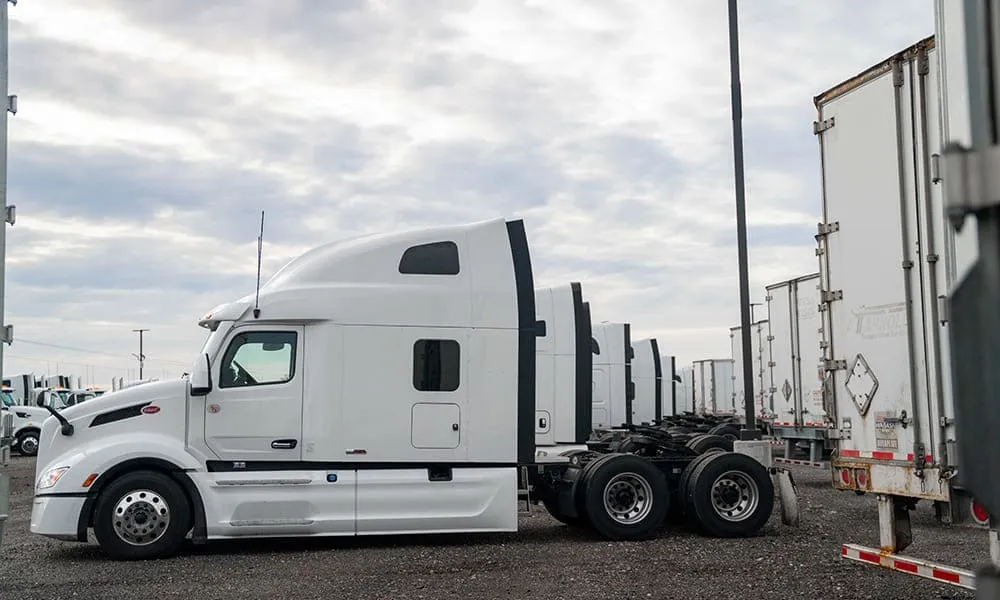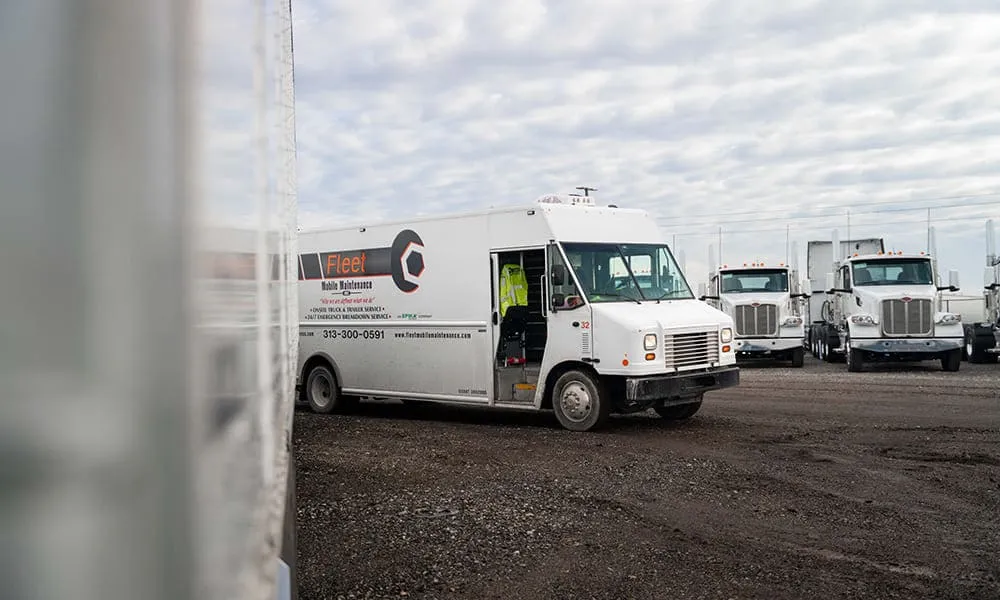Heavy Duty Truck Transmission Types: A Guide to Making the Right Choice

In the business of fleet management, making the correct decision about the types of transmission to use in a heavy duty truck is not merely a technical decision. It is a business choice. It is because the wrong choice affects performance, expenses, and driver satisfaction. In truck fleet management operations, types of transmission are crucial specially where downtime is a major expense and operational inefficiencies, including use of the wrong heavy duty truck transmission, is a cost center, the business requires the use of the correct heavy duty truck transmission. Types of transmission are far beyond the change of gears. It measures how well engine power is supplied to the wheels, handles engine power, manages the truck’s load performance, and adapts to different terrains and roads. From the perspective of fleet managers and owner operators, it greatly affects fuel economy, maintenance expenses, and retention rates of drivers.
Modern fleet management has these types of transmissions: Advanced Automatic Transmissions, Emerging Technologies, Manual Transmissions, Automated Manual Transmissions, and Continuously Variable Transmissions (CVTs) are some of the more common truck transmissions in use today. All of these transmissions for truck options have their benefits and drawbacks along with their appropriate use cases. This guide weighs all these systems and their respective advantages and disadvantages in order to ensure that you make informed decisions that suit your operation requirements. Whether you manage long-haul freight, metropolitan deliveries, or construction fleets, this guide will give you the power to make decisions that improve performance and are cost-effective.

What Is a Heavy-Duty Truck Transmission?
Heavy duty transmissions serve as the centerpiece of a truck’s drivetrain. It is responsible for transforming the raw power the engine produces into torque and speed that is usable for the road and the load being carried. Even the most powerful engine would be inefficient and difficult to control without a transmission.
Heavy duty applications require specific types of transmissions for truck because the torque levels needed often exceed 1,800 lb-ft and must be sustained for long periods. Moreover, the systems must be capable of withstanding the wear and tear resulting from long-haul driving, stop-and-go driving, or off-road driving. Unlike light-duty vehicles, heavy duty vehicles are built to withstand a greater amount of abuse while stand up structures for light vehicles are lacking. Heavy-duty vehicles are equipped with reinforced, stronger components, more efficient and powerful cooling systems, and supremely efficient gearing ratios.
Heavy duty trucks are equipped with reinforced systems that make them able to withstand most conditions any vehicle would struggle with, including harsh endurance test of mountainous regions and heavy-duty loads. Specialized shift patterns are designed to optimize fuel economy during heavy freight transport. Essential for reacting to alterations in the course ahead, atmospheric conditions, and the weight of the cargo. If properly maintained, this sort of transmission is capable of enduring hundreds of thousands of miles in driving distance without major issues. This provides fleet owners lower long-term ownership expenses, fewer roadside breakdowns, and enhanced reliability perception. Epika Fleet provides fleet management solutions that ensure peak operating conditions for your fleet throughout the year.

Understanding Different Transmission Types
Just like every other truck, every truck has its own set of features and comes with different types of transmissions. Although truck transmissions differ in design, operation, and maintenance, their primary purpose is the same. The difference in design, operation, and maintenance comes from the four truck transmissions which are manual, AMT, automatic and CVT. Each truck transmission is tailored towards a different operational circumstance or a driver’s choice.
Manual Transmissions
Manual transmissions remain a staple in heavy trucking. Operating these systems involves the driver engaging and disengaging the clutch while selecting the appropriate gear. These systems are celebrated for their ruggedness and reliability, and their functionality in driving and precision control of high torque.
The benefits of manual types of transmission are a more affordable initial purchase price in comparison to AMTs and automatics, fuel efficient and easier to service in remote areas. It offers improved control for experienced drivers, particularly on steep gradients. But it is more difficult to train new operators and may contribute to driver burnout during long shifts or in congested areas. Also not as fuel efficient if not driven properly.
Example in Use:
An example from real life in use includes logging fleets in steep mountainous areas having a preference for manual vehicles because of the easier control of torque management going down steep slopes loaded with heavy logging equipment.
Automated Manual Transmissions (AMTs)
AMTs, or Automated Manual Transmissions, blend the manual with automated features by having the shifting and clutch processes automated. Gear changes are automatic, eliminating the need to engage the clutch, which protects the gearbox.
The North American Council for Freight Efficiency (NACFE) estimates that fleets can expect an average of 1-3% improvement in fuel economy from AMTs
These types of transmission provide multiple advantages for drivers and fleet operators. Through more proficient shifting, fuel optimization is aided, and driver fatigue is improved, making long hauls much less taxing. With less fully manual systems, new drivers often prefer AMTs, easing the learning curve, which, in turn, reduces training time and allows drivers to get on the road faster. On the other hand, some disadvantages need to be evaluated. AMTs are more expensive than manual systems. Moreover, traditional manual drivers need time to adjust to the new technology. A classic example is regional freight carriers that operate on urban and highway routes. These companies enhance operational efficiency, reduce driver training time, and decrease fuel consumption fleet-wide while using AMTs.
Automatic Transmissions
In automatic types of transmissions, the separate gears are changed using electronic, hydraulic, or pneumatic systems without the driver’s input. Heavy-duty steering automatics, for instance, are transport systems which have a high degree of dependability. Such systems are particularly useful in high-volume stop-and-go traffic in a city. Such systems are also a boon for drivers of varying skill levels, which is a considerable advantage for fleet operations. The use of automatics is especially advantageous in stop-and-go traffic. It reduces the
A study on military trucks by NREL Technical Report, found that 10-speed and 12-speed AMTs improved fuel economy by 14.5% and 12.2%, respectively, compared to a conventional automatic, due to optimized gear selection.
chances of damage from driver error. However, automatics have a few disadvantages as well, including high costs for fuel efficiency, maintenance, and servicing, as well as lower efficiency compared to AMTs in long-haul operations. In fleet operations, the automatics, especially used in urban operations such as trams in congested areas. The turnaround times and reduced driver stress.
Continuously Variable Transmissions (CVTs)
The most recent types of transmissions, CVTs, offer the unique capability of providing an infinite number of gear ratios. This optimally improves the efficiency and performance of the engine by having it operate in the optimal range during any given speed. Although CVTs are more common in heavy duty trucks, other types of transmissions are still more common. CVTs are characterized by smooth uninterrupted acceleration, enhanced fuel efficiency in specific functions, and reduced mechanical wear. There are still disadvantages, such as the decreased torque capacity when compared to manuals and AMTs, the greater expense from the increased mechanical complexity, and reduced reliability from increased wear.
A research by International Research Journal of Modernization in Engineering Technology and Science (2023), reveals that CVTs can improve fuel economy by up to 10% compared to a traditional automatic transmission by keeping the engine operating at its most efficient speed at all times
In practice, CVTs are often incorporated in specialized municipal service trucks designed for low-speed, stop-and-go driving. The smooth delivery of power associated with CVTs is particularly helpful in such operations. CVTs are often found in hybrid and electric trucks, as these vehicles are equipped with single-speed gearboxes, which are more common in electric vehicles and are more efficient overall. Additionally, hybrid trucks sometimes use automated manual transmissions to simplify the switching between electric and combustion engines.

Key Factors to Consider When Choosing a Transmission
The right types of transmission will greatly depend on the operational profile of the fleet.
Factors To Be Analyzed Include:
• Route Profile: Highway, mixed, urban, or off-road.
• Load Type: Heavy and constant, or variable.
• Driver Experience: Highly-skilled manual or mixed.
• Fuel Goals: Some systems will outperform in operational efficiency.
• Maintenance Capacity: In-house or Outsourced.
A fleet specializing in local delivery of construction materials would prefer manual for their durability, while a nationwide parcel carrier would prefer automatics for consistency and ease in driver training.

Cost Considerations
The price of the transmission for truck includes the following, in addition to its purchase price:
• Initial Investment: Less for manual, more for autos and AMT.
• Fuel Efficiency: AMTs tend to save more in the long run.
• Maintenance and Truck Repairs: While the manuals are easier to operate, both AMTs and automatics minimize the effects of driver error.
• Downtime: Reduced breakdowns result in improved ROI.
When calculating costs and benefits for fleet operations, a focus on maintenance and operational costs alongside the purchase price gives a more accurate figure over a five to ten-year period instead of a rushed estimation. Explore fleet optimization with Epika Fleet.

The Best Transmission for Different Heavy-Duty Truck Uses
Every heavy duty truck application does not have a single best transmission type. It completely depends on the operating environment, the type of payload, and the availability of drivers. In the following sections, we explain which truck transmissions are best suited for certain fleet situations with further explanations and additional headings.
Long-Distance Hauling
Long-haul operations require truck transmissions that maintain a balance between fuel efficiency, comfort, and reliability over a sustained period of several miles a week. AMTs are often better than manuals on these routes as their shifting optimization reduces fuel consumption. Automatic transmissions are also effective, especially for a diverse experience mix among drivers, but AMTs tend to outperform for long miles on fuel economy.
Construction and Off-Road
Heavy trucks routinely constructed for off-road and mining use have to deal with extremely steep off-road gradients, rough and unpaved roads, and ultra-heavy vehicle payloads. They still rely on manual gearboxes because of their capability of precise torque control for lasting durability, withstanding rugged off-road terrain. Skilled operators need the ability to optimize gear selection to avoid stalling and maximize drawbar performance during very rough conditions, which manual gearboxes provide.
Some off-road fleets have already started to adopt automation with the rough terrain heavy-duty transmission AMS. These off-road and construction vehicles can operate minimally off-road while still maintaining their automation convenience. These types of transmissions face a very high price, and buyers must conduct a precise analysis of the return on investment before underwriting the purchase.
Urban Deliveries
Driving a vehicle with a manual transmission becomes exceedingly troublesome during city deliveries, due to the need to constantly start and stop, as well as navigate through tight areas. Automatic transmissions offer significant advantages in the city as they eliminate the need to engage the clutch constantly. This ensures focus is directed to safety, route management, and customer care.
As an illustration, parcel delivery companies with 8 to 10 stops in an hour have increased productivity and, at the same time, a reduction in the risk of injury with the use of automatics. This reduction in the mental and physical strain also makes it easier to retain drivers in urban fleets.
Specialized Applications
Transports that come under specialized trucking, like hazardous materials, oversized loads, and municipal services, need a specific transmission to suit operational requirements. Safety and compliance take precedence here and therefore can differ according to the regulatory environment or requirements of the handling of the cargo.
For example, an AMT equipped with predictive cruise control may be advantageous to a truck carrying sensitive hazardous materials. Meanwhile, a CVT would serve a low speed street sweeper well for smooth and steady operation.
In the case of colder northern regions and places with pronounced seasonal variation, weather and temperature conditions can influence the choice of transmission. To the north, colder weather regions can pose challenges when it comes to manually shifting the gears, although automatic and AMTs equipped with adaptive shifting logic are better at coping with cold weather. Fleets operating in snow or ice heavily traffic these regions; therefore, traction control systems are a must.

Transmission Maintenance and Repairs
Different types of transmission, including manual, automatic, AMT, or CVT, whatever it is, a transmission is a strategic asset to the business that will provide a useful service for hundreds of miles if it is well maintained. Providing no upkeep, in turn, will result in catastrophic failures, high truck repair costs, and substantial business downtime.
Best Routine Maintenance Practices are as follows:
Fluid Examination and Replacement:
Transmission fluid, just like any fluid, undergoes degradation over time and especially when exposed to heavier loads or high temperatures. Regular checking and changing reduces the chances of overheating as well as excessive wear.
Filter Change:
Filter systems, if they operate with flow filters, must replace flow filters in a timely fashion to avoid circulating debris and harming other parts.
Clutch Setting:
Quarter-clutch systems must engage in periodic clutch preset so that it improves performance and lengthens the life of the components.
A maintenance schedule tailored specifically to your type of heavy-duty truck transmission can mitigate unplanned failures. Many fleets schedule transmission inspections alongside regular maintenance servicing to ensure any problems are dealt with in advance of breakdowns.
1) Common Truck Repair Issues and Prevention
Types of transmissions in heavy duty trucks experience common problems including gear slippage, overheating, and sensor failure in electronically controlled systems. These challenges are often a result of poorly executed maintenance, leaking fluids, or improper truck operations. Working with service providers like Epika Fleet will help you with this.
2) Maintenance Costs and ROI
Despite the ongoing costs of maintenance servicing, the ROI is very competitive when compared to a full replacement. With the right upkeep, a manual or AMT can outlast 750,000 miles, while a unit that is neglected usually fails within half that.
The American Transportation Research Institute’s (ATRI) “Operational Costs of Trucking” report consistently shows that maintenance and repair are a significant part of a fleet’s costs. This underscores that proactive maintenance is critical for managing expenses and improving overall profitability.
For fleet managers and maintenance supervisors, routinely servicing fluids and updating software for automated systems can result in a fleet wide savings.
Conclusion
The decision on the types of transmission used in heavy-duty trucks influences more than the driving experience. It affects operational effectiveness, determines fuel expenditure, and affects profitability margins over time. With your fleet, if the control manuals provide the most control, AMTs offer the best convenience, and automatics provide the most convenience, your decision should be operational needs, budget, and driver requirements.
With a well-aligned and proactively maintained transmission type, partnering with a seasoned fleet maintenance provider like Epika Fleet will enable you to gain maximal uptime, enhanced safety, and better value from the trucks over their service life.
FAQs
What is the most fuel efficient heavy duty truck transmission?
For long-haul routes, optimized AMT shifting patterns often offer the best fuel efficiency.
Which transmission type is best for urban deliveries?
City driving with frequent stops reduces driver fatigue while improving productivity.
How often should transmission fluid be changed?
The general recommendation of most manufacturers is 30,000-60,000 miles; however, heavy duty use may necessitate more frequent changes.
Are CVTs reliable for heavy duty truck transmission?
While reliable for certain niche uses, CVTs are still rare in heavy-haul applications.
Does Epika Fleet service all types of transmissions?
Yes, they also service manual, automatic, AMT, and other specialized transmission systems.
